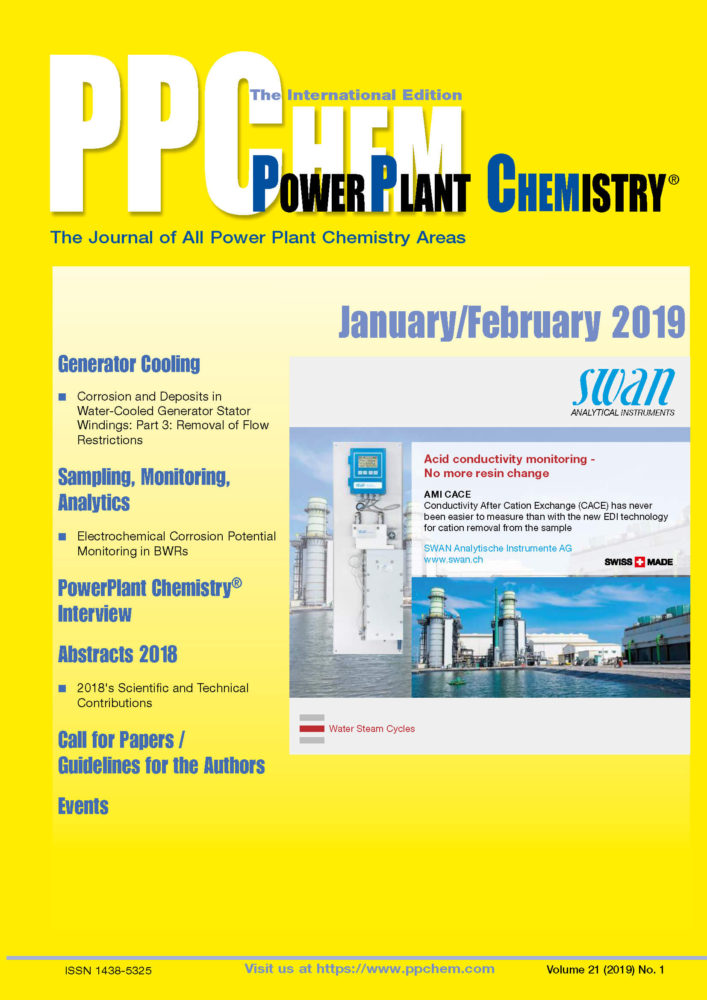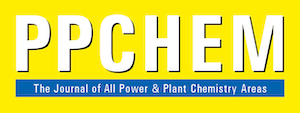
For members only
ABSTRACTS
Corrosion and Deposits in Water-Cooled Generator Stator Windings: Part 3: Removal of Flow Restrictions
Thomas Bauer, Matthias Svoboda, and Robert Svoboda
Flow restrictions in generator stator bar hollow conductors can be removed either mechanically or chemically. Both methods have their advantages and disadvantages and in certain cases only a combination of both leads to success.
Mechanical cleaning can open up completely plugged hollow conductors at the inlet or outlet of the bars, while chemical cleaning thoroughly removes all copper oxides, also within the bars. However, as with all chemical cleaning methods, there must be access for the chemicals to the copper oxide deposits so the chemicals can dissolve and remove the plugging.
To prevent metallic deposits, it is important that the chemical cleaning be performed under oxidizing conditions. Additionally, it might also be useful to apply a post-cleaning surface treatment under certain conditions.
It is recommended to take any kind of plugging seriously and to start reacting when first signs of plugging occur. Once severe conditions have developed, this might lead to power downrates, a decrease in insulation lifetime, forced outages or in the worst case even irreversible damage to the generator.
PowerPlant Chemistry 2019, 21(1), 8–20
For Members only
Electrochemical Corrosion Potential Monitoring in BWRs
Yoichi Wada, Kazushige Ishida, Masahiko Tachibana, Nobuyuki Ota, and Makoto Nagase
The status of Hitachi-GE Nuclear Energy’s electrochemical corrosion potential (ECP) sensor development and ECP measurement in boiling water reactors (BWRs) is reviewed. Hitachi-GE Nuclear Energy (Hitachi-GE) has been dedicated to developing and providing ECP sensors and applied ECP monitoring to various BWRs since the ECP has been an index of stress corrosion cracking (SCC). Hitachi-GE considers simultaneous use of at least 2 types of ECP sensor and employment of a guard drive circuit for the ECP measuring system to be essential. Results of ECP measurement in hydrogen water chemistry (HWC) showed that the ECPs were above 0.1 V(SHE) before HWC and decreased with an increase in the hydrogen concentration in the feedwater. Compared to the bottom region, the ECP in the primary loop recirculation system decreased at lower hydrogen dosage. Hitachi-GE recommends long-term and in-situ ECP monitoring because the ECP is affected by core management and the direct measurement of the ECP is more meaningful for SCC evaluation.
PowerPlant Chemistry 2019, 21(1), 26–39
For Members only
PowerPlant Chemistry® Interview
Tapio Werder
On January 1st, 2019, the publishing house Waesseri GmbH was transformed into the new company PPCHEM AG. To introduce this change to our readers, Tapio Werder, Editor in Chief of the PowerPlant Chemistry® journal, talks to Michael Rziha, Chief Key Expert for Plant Chemistry at PPCHEM AG.
PowerPlant Chemistry 2019, 21(1), 40–41
For Members only
2018’s Scientific and Technical Contributions
PowerPlant Chemistry 2019, 21(1), 42–49

